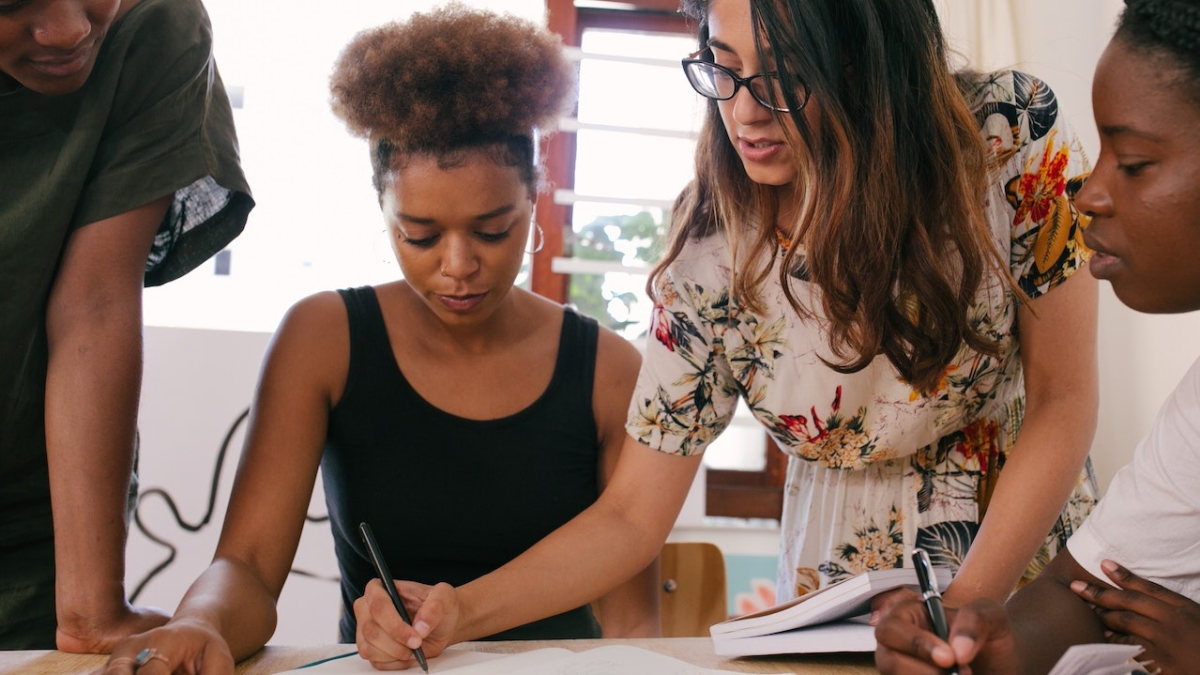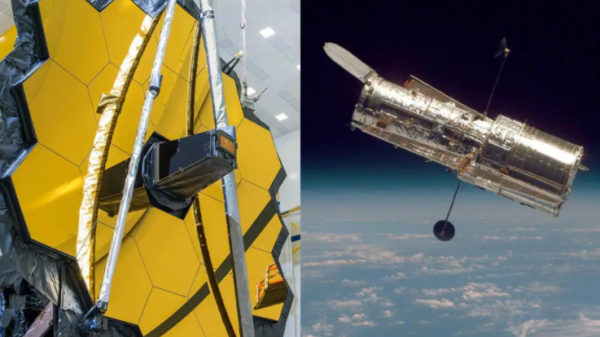ASU study finds active learning can alleviate depression for undergraduates

“We know that active learning courses, where students are engaging with content and their peers rather than passively listening to the instructor, can affect students' anxiety,” said PhD candidate Carly Busch. Photo courtesy Pexels
Increasingly, college courses are transitioning from traditional lecture to active learning because research shows that students learn more and struggle less when they engage in activities and discussions in class.
However, new ways of teaching and learning can also bring new sets of challenges and opportunities.
In a new study published in Life Sciences Education, Arizona State University researchers Katey Cooper, Tala Araghi and Carly Busch highlight how active learning has the potential to both alleviate and exacerbate depressive symptoms in undergraduates.
“It was encouraging to find that, despite the negative impact that depression can have on learning, active learning courses can have a positive impact on students’ depression,” Cooper said.
“Specifically, we found that engaging students in learning, providing frequent opportunities to successfully solve problems, giving students opportunities to seek social and academic support from their peers and allowing them chances to realize that other students struggle too was protective against depressive symptoms.”
Cooper is an assistant professor in the School of Life Sciences and a program director of biological education research in the Center for Biology and Society.
Busch is a PhD candidate in biology and society in the Cooper Biology Education Research Lab. Over the years, the Cooper Lab has examined how new ways of teaching, including active learning, result in novel challenges and advantages for undergraduate science students.
Araghi graduated in 2022 with a degree in biological and biomedical sciences and as a member of Barrett, The Honors College. Busch served as Araghi’s mentor as she carried out her honors thesis in the Cooper Lab, which resulted in the depression and active learning study.
“Based on prior work from our group, we know that active learning courses, where students are engaging with content and their peers rather than passively listening to the instructor, can affect students' anxiety, but it was unknown what aspects of these courses exacerbate or alleviate their depressive symptoms,” Busch said.
Depression is defined by the American Psychiatric Association as a mood disorder that results in persistent feelings of sadness and hopelessness and/or a loss of interest in activities you once enjoyed. In 2019, a nationwide survey revealed that 39% of undergraduates met the clinical criteria for major depressive disorder. This number increased to over 45% during the COVID-19 pandemic.
To characterize the relationship between active learning and undergraduate depression, Cooper, Araghi and Busch conducted a national exploratory interview study of 29 undergraduates who identify as having depression and who have been enrolled in at least one in-person active-learning college science course.
“I had the opportunity to connect with undergraduates all over the country and understand how impactful instructors’ decisions and teaching styles are to the severity of their depression. I began to understand that if we could uncover how teaching styles both exacerbate and alleviate symptoms of depression, we could come up with ways to make learning spaces more inclusive for students with depression,” Araghi said.
Undergraduate students who participated in the study described an array of ways that their depression makes it challenging for them to learn content in active-learning college science courses.
The study identified four specific aspects of active learning that have an effect on students' depressive symptoms: opportunities to compare self with others, socializing with others while learning, frequent formative evaluation and engagement in learning.
Each of these aspects have the potential to both alleviate or exacerbate a student's depression symptoms, especially when acknowledging that depression symptoms are not uniformly consistent day to day.
For example, asking students to participate in a high-engagement activity can help students experiencing depression symptoms by distracting them from negative self-talk and generating more social interaction. However, high-engagement activities require more energy and mental bandwidth and can sometimes feel draining and overwhelming for students experiencing depression symptoms.
“When you look out into your class, it’s reasonable to believe that at least one-third of your students are struggling with depression. For me, that means at least 100 undergrads in my class. So, hearing all of the positive and negative ways that active learning can impact student depression really made me think deeply about the decisions I make as an instructor, how far-reaching they are and the importance of making choices that have a positive effect,” Cooper said.
Overall, active learning has the power to serve as a positive and encouraging practice for student learning, especially among students who experience anxiety or depression, and by maintaining mindfulness of student experience and making additional small adjustments, teachers and educators can increase this effectiveness and improve the learning experience for their students.
“A particular strength of this study is that through these recommendations, we can continue implementing active learning across college science courses, but do so in a way that is thoughtful about the experiences of students with depression,” Busch said.
In the example of high-engagement teaching activities, the study suggests that instructors consider giving students the opportunity and flexibility to opt out when they need to preserve their resources on days when their depression symptoms are severe.
“Even though active learning has the potential to exacerbate depressive symptoms, I remain a tremendous proponent of teaching in active learning ways, because of the profoundly positive impact it can have on student performance,” Cooper said.
“Our study suggests that by making small changes to how we teach, we have the opportunity to avoid inadvertently exacerbating depressive symptoms. This work provides clear recommendations for how to develop active-learning courses in ways that maximize students' mental health.”
More Science and technology

ASU receives 3 awards for research critical to national security
Three researchers in the Ira A. Fulton Schools of Engineering at Arizona State University have received grant awards under the …

Celebrating 34 years of space discovery with NASA
This year, NASA's Hubble Space Telescope (HST) is celebrating its 34th anniversary of the world's first space-based optical…

Making magic happen: Engineering and designing theme parks
The themed entertainment industry is widespread and diverse, encompassing everything from theme parks to aquariums, zoos, water…